Information Closure
JC - 11/18/20
In contemplation the mind is not at pause but fully active
- St. Thomas Aquinas
Outline
- Scale problem of consciousness
- Information Closure
- Coarse Graining
- NITC
- Conscious verses Unconscious
- Comparisons to other theories
- Thoughts
Outline
- Scale problem of consciousness
- Information Closure
- Coarse Graining
- NITC
- Conscious verses Unconscious
- Comparisons to other theories
- Thoughts
Scale Problem
- How many neurons need to fire for there to be an associated experience?
- Any decent theory of consciousness should be able to provide us some insight to the problem
Not sure I know the evidence. Intuitively, it seems like many neurons need to fire for conscious experience, but what about:
Local field potentials and their predictability? The Jennifer Aniston neuron? Mirror Neurons?
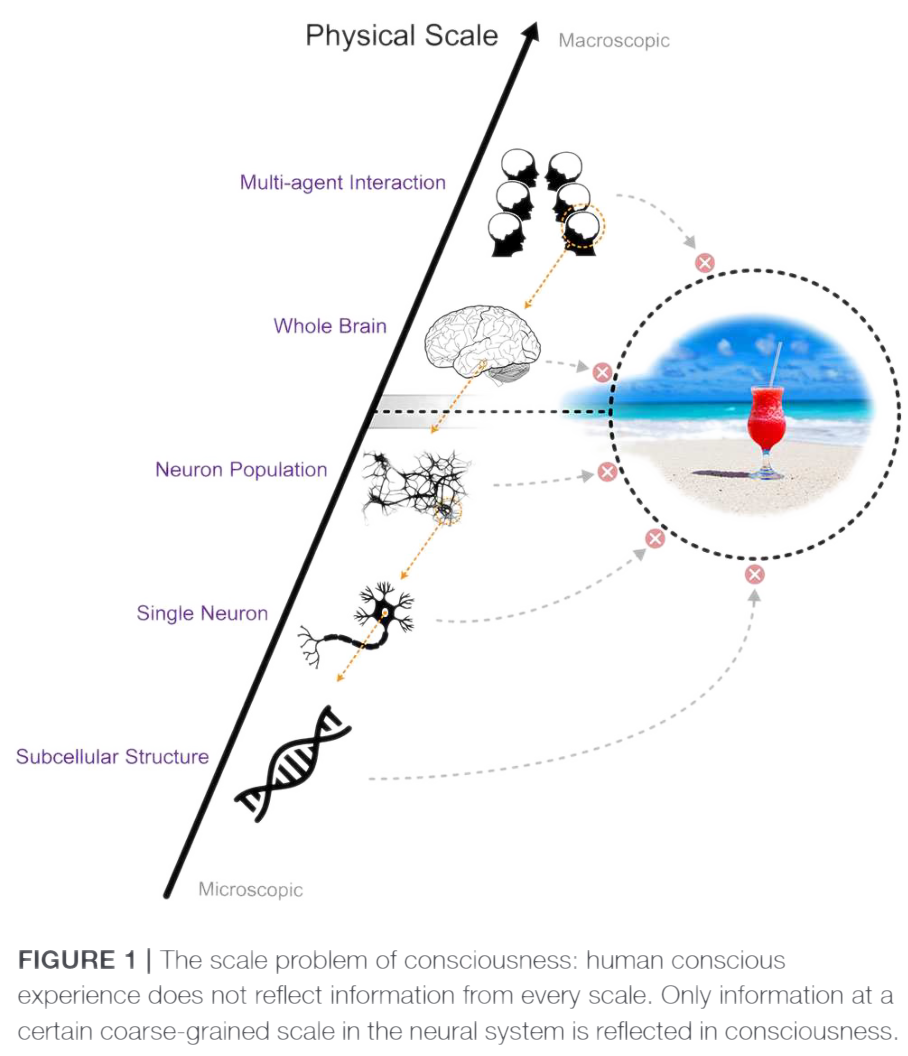
Information Closure
These two processes can interact with each other
$$ Y_{t+1} = f(Y_t, E_t) $$
$$ E_{t+1} = g(Y_t, E_t) $$

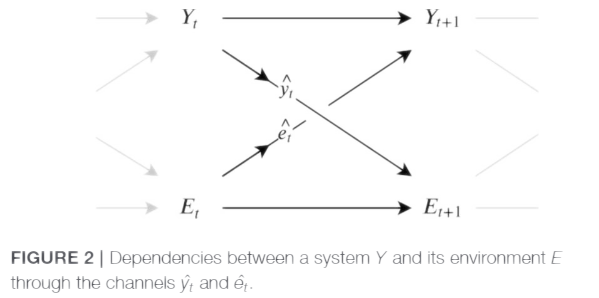
$$ + \epsilon $$
$$ + \epsilon $$
- Consider two processes: \(E_t\) and \(Y_t\)
Information Closure
Information flow, \(J_t\), is defined as the conditional mutual information between current environmental state \(E_t\) and future system state \(Y_{t+1}\) given the current system state


A system is informationally closed when \(J_t = 0 \)
Information Closure
J equals how much the future of the system depends on the environment MINUS how much the future of the system depends on it's own history
Example Cases
- If two processes are independent, \(J_t\) is trivially zero
- For a non-trivial example, the environment encodes some information about the future state of the system
2.1. Informational Closure Does Not Imply Causality
Two Scenarios
Modeling
- System models environment and can predict it
- (our brain)
Passive Adaptation
- \(Y_{t+1} = f(E_t)\)
3. COARSE-GRAINING IN THE NEURAL SYSTEM
Coarse-Graining
- NTIC requires predictability in the system. Naturally benefits from coarse graining
- I think this is in line with intuition
- Empirically, population codes seem to be evident


4. INFORMATION CLOSURE THEORY OF CONSCIOUSNESS
ICT
Hypothesis:
A process Y is conscious if and only if it is a C-process of some process X
5 Implications
Implications
- Consciousness is information
- Consciousness is associated with physical substrates
-
They are self-determining
- No course graining knows anything not known to the process itself
- Encode environmental influence on itself
- Conscious processes unaware of information at smaller scales
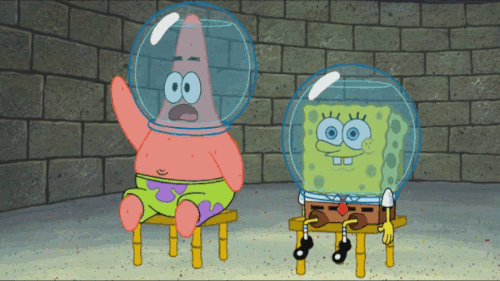

Qualia
- Two ways to increase consciousness:
- increase mutual information between current internal state and future state
- Environment should be predictive
- NTIC is a non-monotonic function of coarse-graining
- ICT suggests that human consciousness occurs at a scale of coarse-graining that allows for high NTIC
- Size of state-space of C-process associated with richness of experience
- different physical implementations could map to the same conscious experience
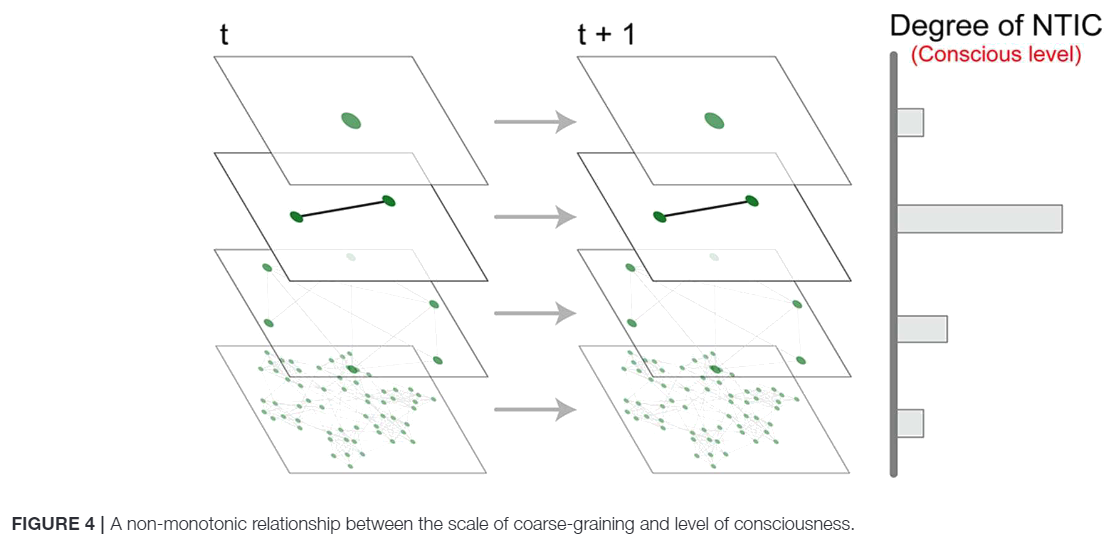
5. CONSCIOUS VS. UNCONSCIOUS PROCESSING
(Un)conscious Processing
Two scenarios:
Reflexive behaviors
- Deterministic reflexive behaviors are unconscious
- Some pure feedforward networks can potentially be conscious
Adding trivial information to a process
- adding informationally closed processes together does not effect consciousness
Conscious processing:
"An NTIC process can still provide environmental information without new sensory inputs"
Summary
- NTIC is not a functionalist perspective
- Evolved by chance
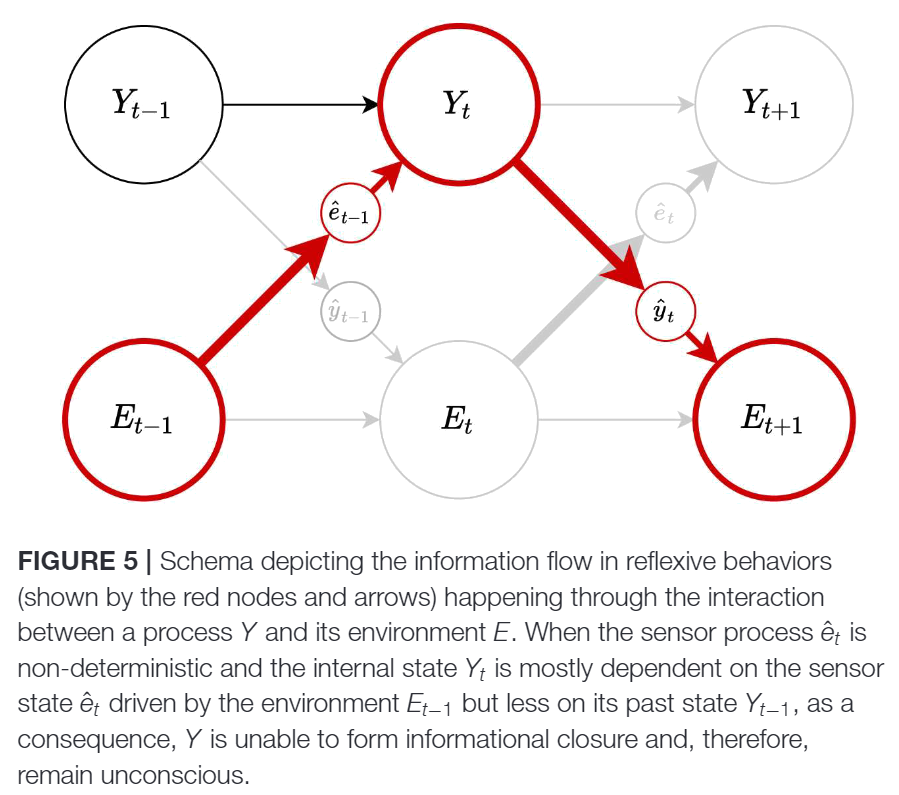
6. COMPARISON WITH OTHER RELEVANT THEORIES OF CONSCIOUSNESS
Other Views
Multilevel Views
- Neurorepresentationalism (Pennartz, 2015) is a functional theory, and only considers coarse-graining in non-informationally closed systems
- Intermediate Level Theory (Jackendoff, 1987) focuses on processing heirchary and is fundamentally different
IIT
- Both are informational
- IIT focuses on relationship between consciousness and causal interaction among elements of the system
- Exclusion axiom: ICT allows for coexisting consciousness
- May have different predictions of system damage
Predictive processing
- Well integrated with Bayesian brain hypothesis
- Fails to say why some predictions are conscious and others are not
- Not a theory of conscious because doesn't state how inference becomes conscious
- Can be combined with ICT
- Calculations not conscious because they are not part of the coarse grained system
Sensorimotor Contingency
- SMC emphasizes interaction between system and environment
Global Workspace Theory
- Neural system is made up of specalized modules and a central global workspace which integrates and broadcasts information gathered from these modules
- Only info in the global workspace reaches conscious experience
- Doesnt give precise meaning of information broadcasting
Limitations, Future Work, and Conclusions
- Doesn't address hard problem
- I think out of reach for class of information theories
- Environment not uniquely defined
- Individuality a major problem
- Theory should be able to use point-wise informational measures
- Dreaming
- No specific coarse graining functions given
Closing Thoughts

My Thoughts*
- No learning mechanism!
- It’s not like systems have a natural tendency to form NTIC, and it might correspond to consciousness, but what is under selective pressure is # of offspring. Therefore, no reason for NTIC unless certain things can't be done without it
- Not clear to me why many computer programs would not be conscious? Like autocomplete or predictive models of stock market would not be approaching consciousness (not issue in IIT)
- What about emotion?
- Fear, love, joy, desire
- Important to emphasize that this simply states a new axiom
- Think dreaming is big weakness
- How far up the chain do we take the recursion?
*I have my own theory of a connection between semantic information and conscious experience/perception